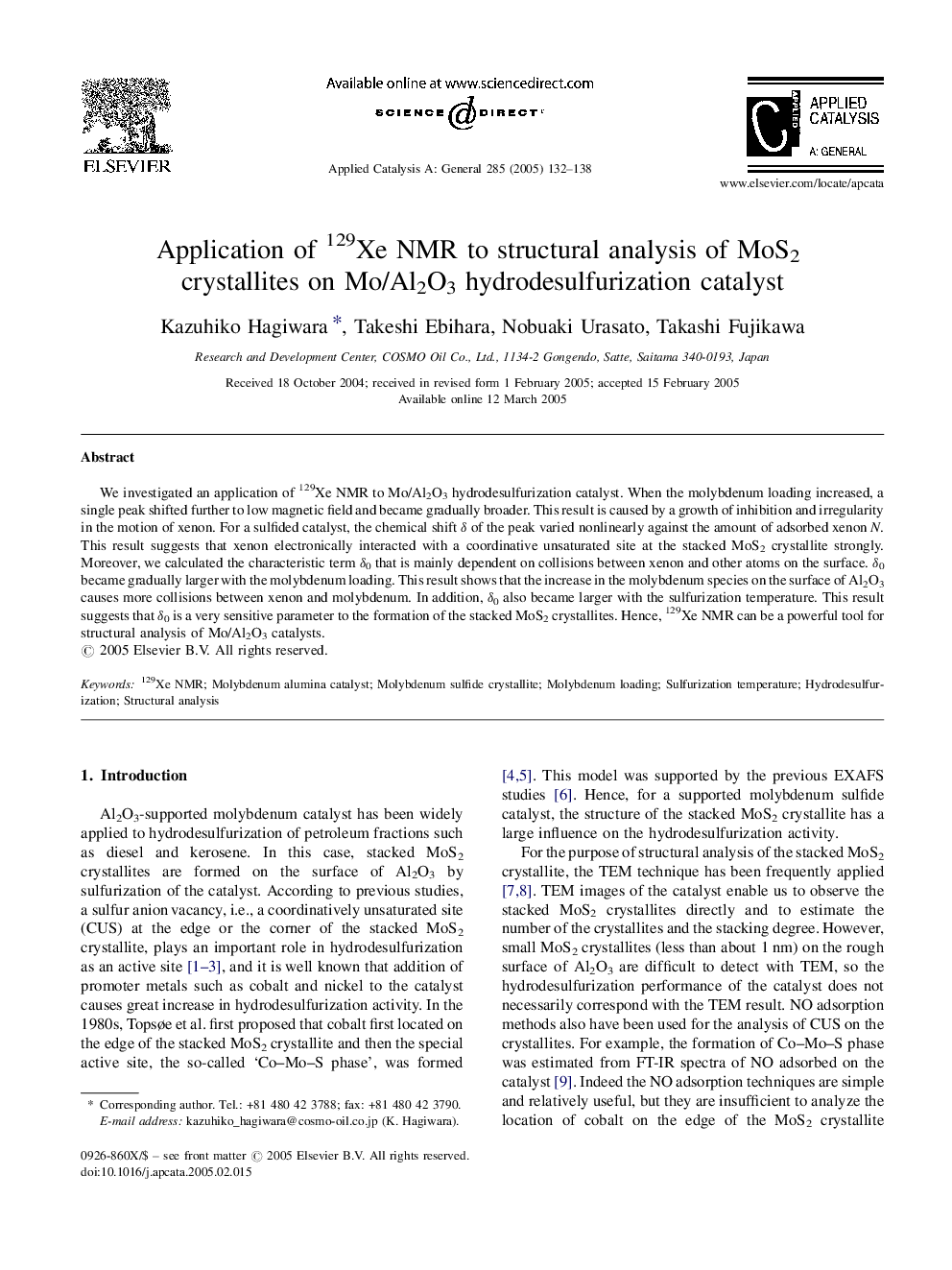| Article ID | Journal | Published Year | Pages | File Type |
|---|---|---|---|---|
| 9607954 | Applied Catalysis A: General | 2005 | 7 Pages |
Abstract
We investigated an application of 129Xe NMR to Mo/Al2O3 hydrodesulfurization catalyst. When the molybdenum loading increased, a single peak shifted further to low magnetic field and became gradually broader. This result is caused by a growth of inhibition and irregularity in the motion of xenon. For a sulfided catalyst, the chemical shift δ of the peak varied nonlinearly against the amount of adsorbed xenon N. This result suggests that xenon electronically interacted with a coordinative unsaturated site at the stacked MoS2 crystallite strongly. Moreover, we calculated the characteristic term δ0 that is mainly dependent on collisions between xenon and other atoms on the surface. δ0 became gradually larger with the molybdenum loading. This result shows that the increase in the molybdenum species on the surface of Al2O3 causes more collisions between xenon and molybdenum. In addition, δ0 also became larger with the sulfurization temperature. This result suggests that δ0 is a very sensitive parameter to the formation of the stacked MoS2 crystallites. Hence, 129Xe NMR can be a powerful tool for structural analysis of Mo/Al2O3 catalysts.
Related Topics
Physical Sciences and Engineering
Chemical Engineering
Catalysis
Authors
Kazuhiko Hagiwara, Takeshi Ebihara, Nobuaki Urasato, Takashi Fujikawa,
